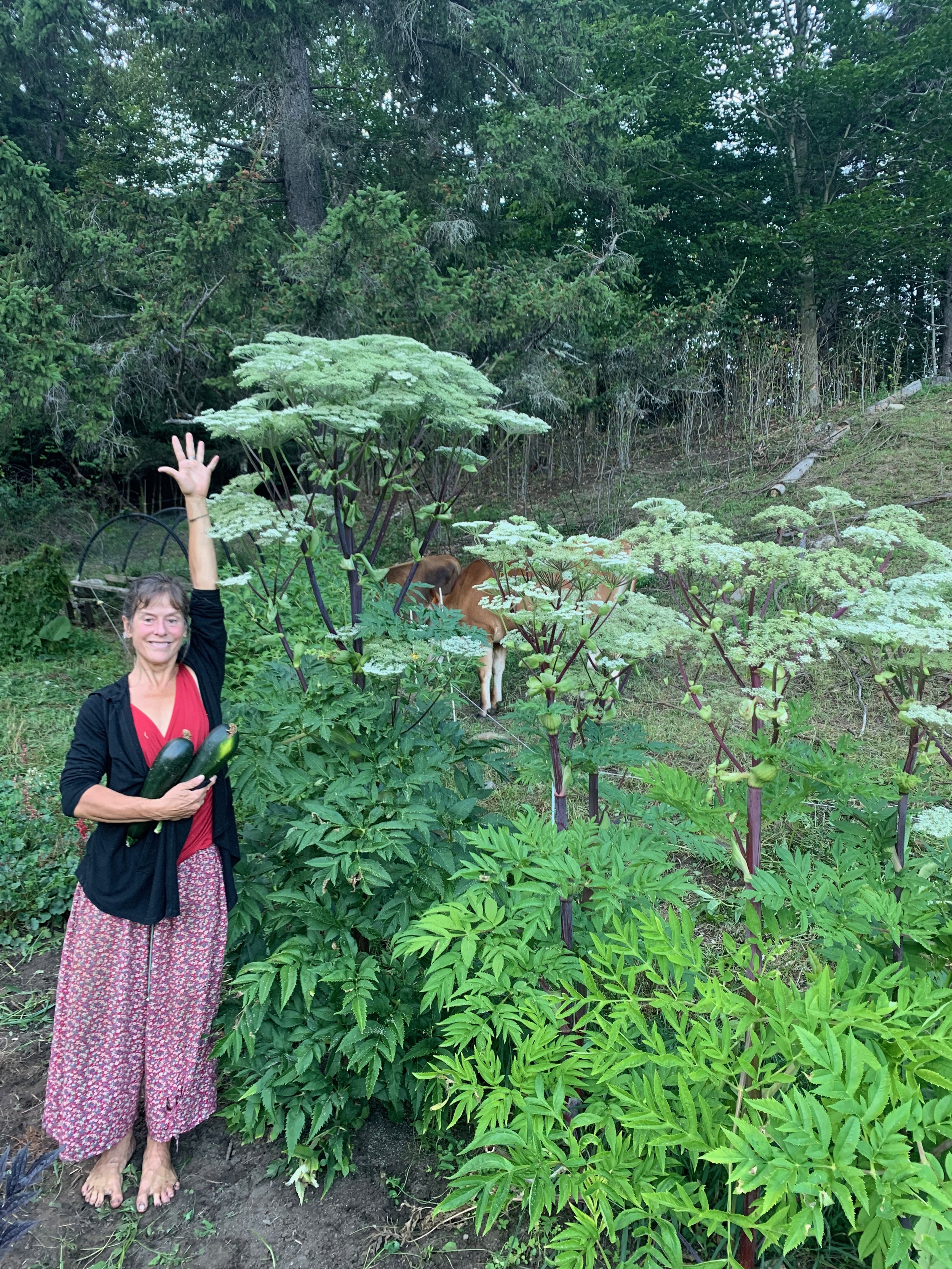Angelica (Apiaceae)
Angelica comprises nearly ninety species of plants with a distribution around the Northern hemisphere, with some species growing in Norway and Greenland. They are biennial, growing a crown of celery-like leaves and putting down a strong root. The second year it goes to seed putting up a stalk with umbrel flowers that draw huge amounts of pollinators to the tiny flowers. The center of diversity is China, where there is a long history of its use medicinally. The roots are most typically used and the flavor is unique, musky and juniperey. It has been used in many aperitifs and digestifs throughout history and is very commonly used in gin in combination with juniper. To make use of the root, it will need to be harvested before the plant makes seed and expires. The dried seeds are also used. Dig in the fall of the first year, or early spring of the second before growth begins. We are always trying different species. Below is some we are offering.
As these are biennials, we sell these plants as first year seedlings and ship in the late summer.
A Archangelica - European species. Naturalized in New England. There is also a purple flowering variety ‘atropurpurea’
A Dahurica - Chinese species. Used in Chinese medicine. 6’-8’ tall.
A Gigas - Korean species, shorter with unique purple flowers contrasting with green foliage.
A Sylvestris ‘Vicar’s Mead’ - Cultivar. One of the most striking angelicas with dark purple foliage and red-purple flowers.
Sold in 3” pots
Angelica comprises nearly ninety species of plants with a distribution around the Northern hemisphere, with some species growing in Norway and Greenland. They are biennial, growing a crown of celery-like leaves and putting down a strong root. The second year it goes to seed putting up a stalk with umbrel flowers that draw huge amounts of pollinators to the tiny flowers. The center of diversity is China, where there is a long history of its use medicinally. The roots are most typically used and the flavor is unique, musky and juniperey. It has been used in many aperitifs and digestifs throughout history and is very commonly used in gin in combination with juniper. To make use of the root, it will need to be harvested before the plant makes seed and expires. The dried seeds are also used. Dig in the fall of the first year, or early spring of the second before growth begins. We are always trying different species. Below is some we are offering.
As these are biennials, we sell these plants as first year seedlings and ship in the late summer.
A Archangelica - European species. Naturalized in New England. There is also a purple flowering variety ‘atropurpurea’
A Dahurica - Chinese species. Used in Chinese medicine. 6’-8’ tall.
A Gigas - Korean species, shorter with unique purple flowers contrasting with green foliage.
A Sylvestris ‘Vicar’s Mead’ - Cultivar. One of the most striking angelicas with dark purple foliage and red-purple flowers.
Sold in 3” pots
Angelica comprises nearly ninety species of plants with a distribution around the Northern hemisphere, with some species growing in Norway and Greenland. They are biennial, growing a crown of celery-like leaves and putting down a strong root. The second year it goes to seed putting up a stalk with umbrel flowers that draw huge amounts of pollinators to the tiny flowers. The center of diversity is China, where there is a long history of its use medicinally. The roots are most typically used and the flavor is unique, musky and juniperey. It has been used in many aperitifs and digestifs throughout history and is very commonly used in gin in combination with juniper. To make use of the root, it will need to be harvested before the plant makes seed and expires. The dried seeds are also used. Dig in the fall of the first year, or early spring of the second before growth begins. We are always trying different species. Below is some we are offering.
As these are biennials, we sell these plants as first year seedlings and ship in the late summer.
A Archangelica - European species. Naturalized in New England. There is also a purple flowering variety ‘atropurpurea’
A Dahurica - Chinese species. Used in Chinese medicine. 6’-8’ tall.
A Gigas - Korean species, shorter with unique purple flowers contrasting with green foliage.
A Sylvestris ‘Vicar’s Mead’ - Cultivar. One of the most striking angelicas with dark purple foliage and red-purple flowers.
Sold in 3” pots


